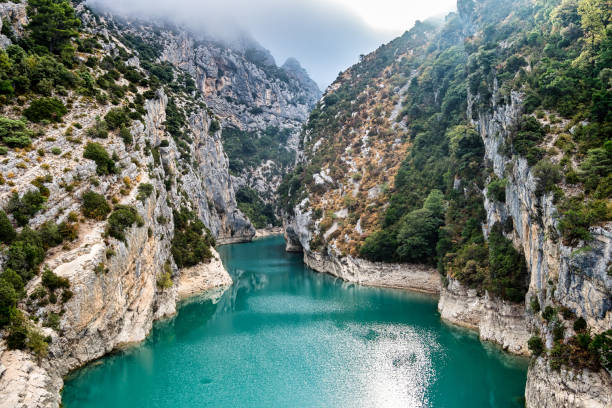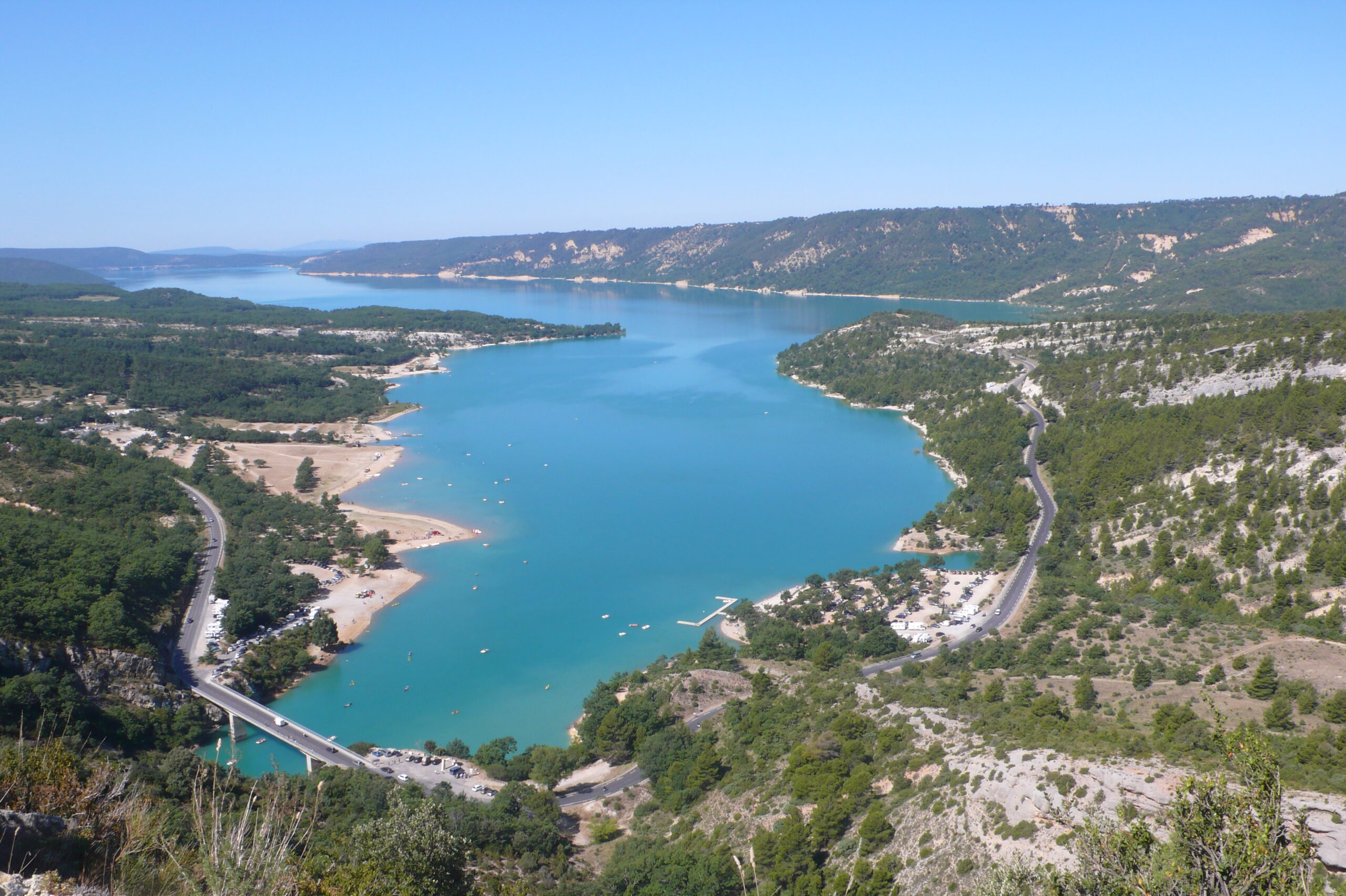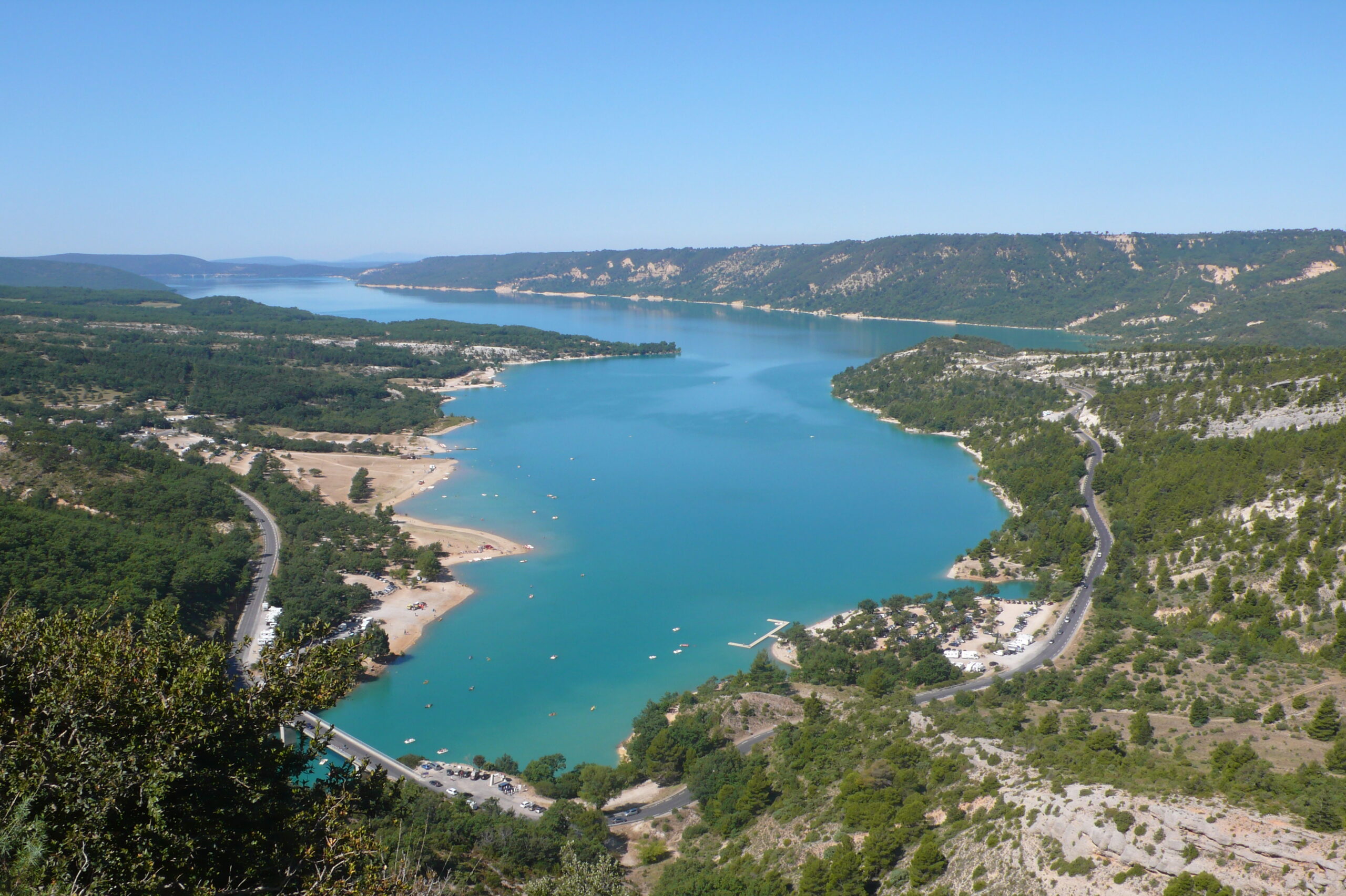What to see in (Haute) Provence?
Next door or a little further, discover the soul of Provence.
You’re in this small village of about 300 inhabitants, perched at an altitude of 750m with its unique landscape of eroded black marl hills, the famous “robines.” The territory of the municipality extends northwards to the impressive “Clue de Barles”, culminating at 1909m with the summit of the “Petite Cloche” and including the hamlets of Tanaron, Ainac and Lambert. The “Cloche de Barles” or “Grande Cloche” at 1887m and the “Pointe d’Aiguille” at 1686m are its two other highest peaks. The “Galabre”, a tributary of the river “Bès”, meanders through the landscape shaped by millennia of erosion. Located within the UNESCO geopark of Haute-Provence, the geological reserve allows you to discover the site of the Ichthyosaur, a fossil of a marine reptile that is 185 million years old and whose species has been extinct for almost 90 million years! Although its skeleton is almost complete, which is very rare, it is difficult to imagine the animal swimming in the seas of the secondary era! Fortunately, many explanatory panels and on-site reconstructions help us to understand it. The walk from the marked trail (6 minutes by car) or from the “Gîtes du château” accommodations takes 2 hours round trip.”
Our favorites
- Explore the surprising lunar landscape of the "robines" on foot or by mountain bike, these black lands made up of limestone, clay, and iron sulfide for their color.
- Climb to the top of the "robine" opposite the castle and admire the view from up there (be careful, it's slippery!)
- Be impressed by the "clues de Barles" and the spectacular work of the Bès, which has carved this notch in the limestone ridge.
Crédit photo : Provence Alpes Digne les Bains Tourisme – Michel Boutin Le Naturographe
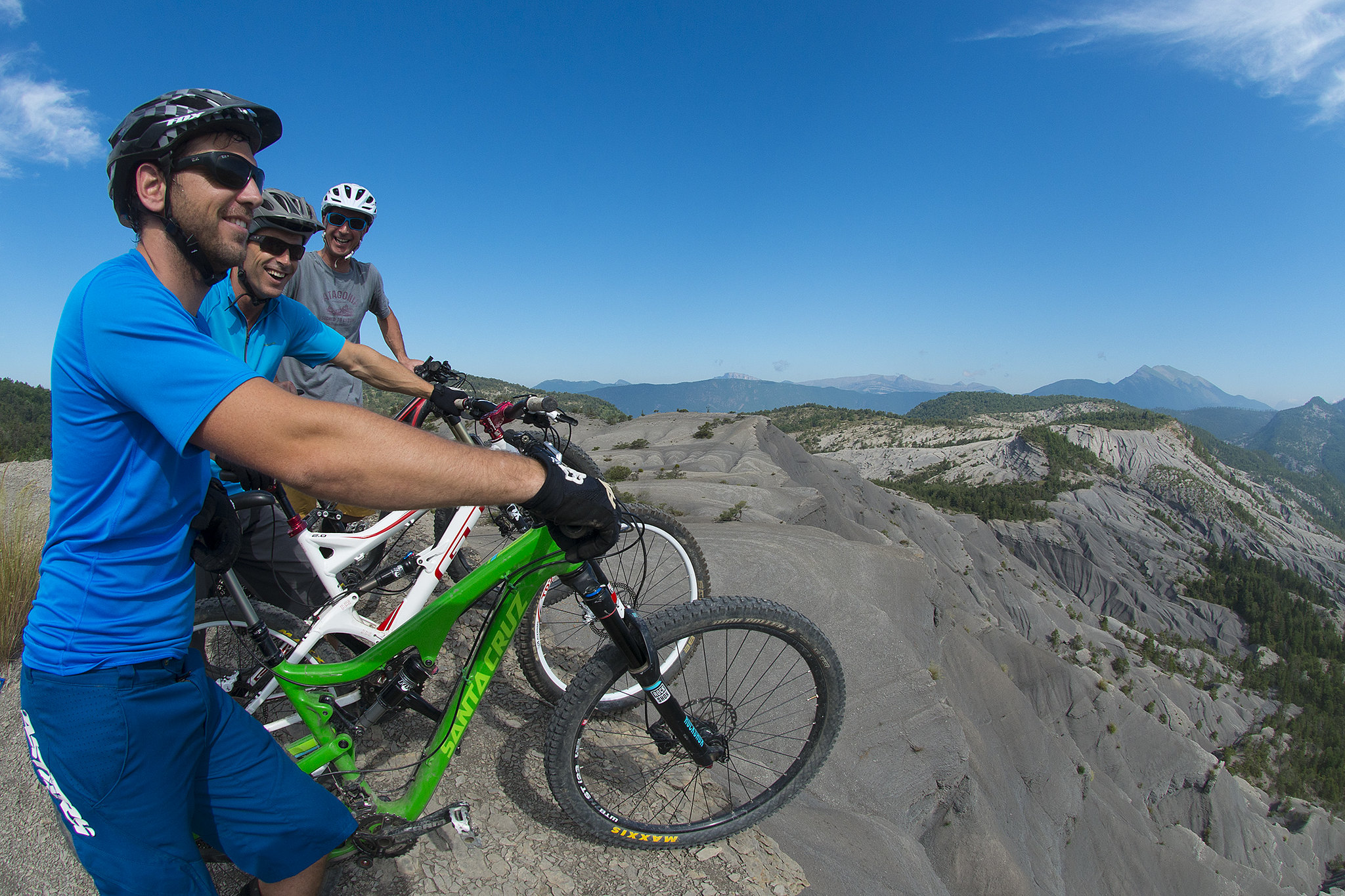

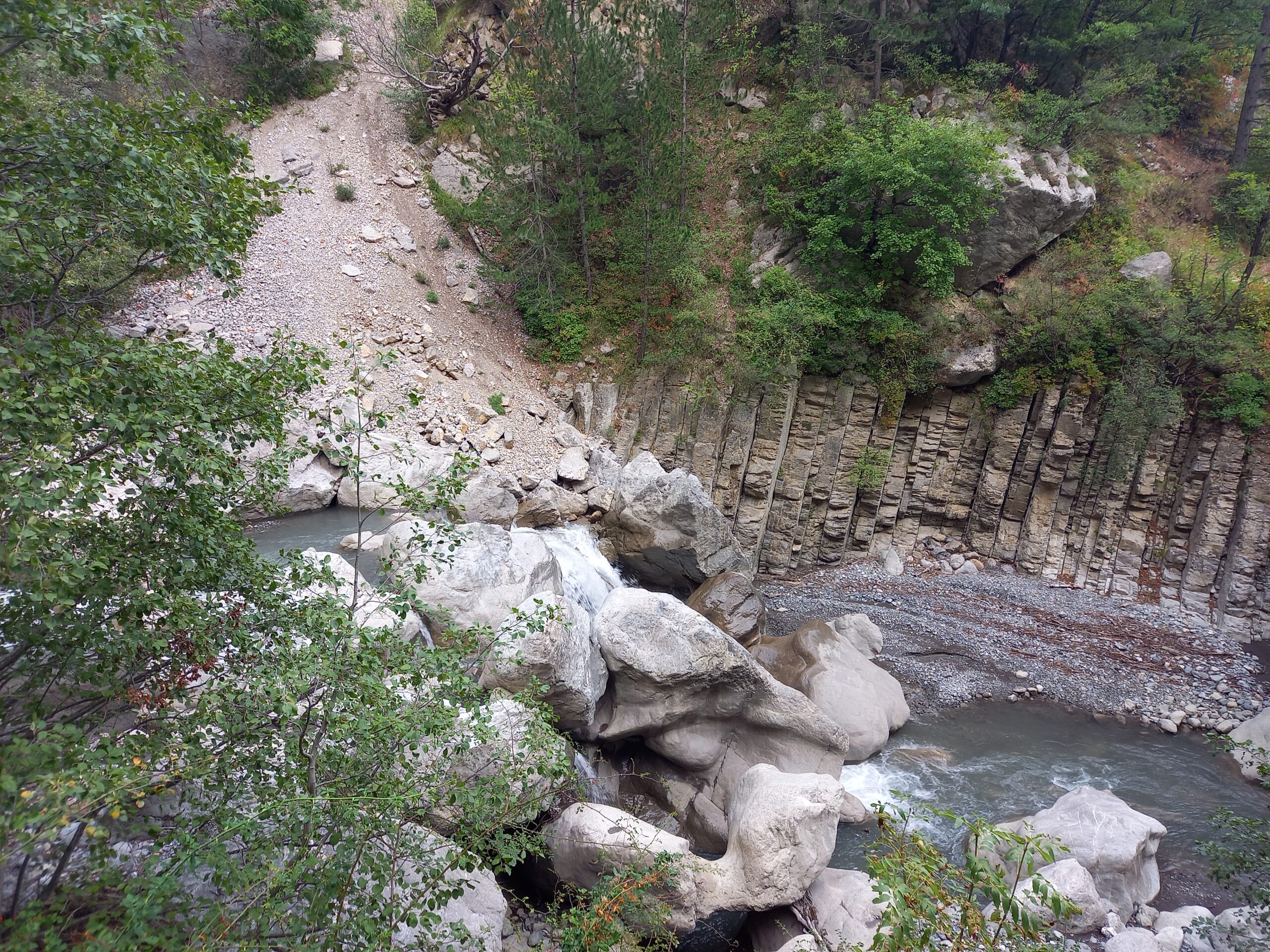


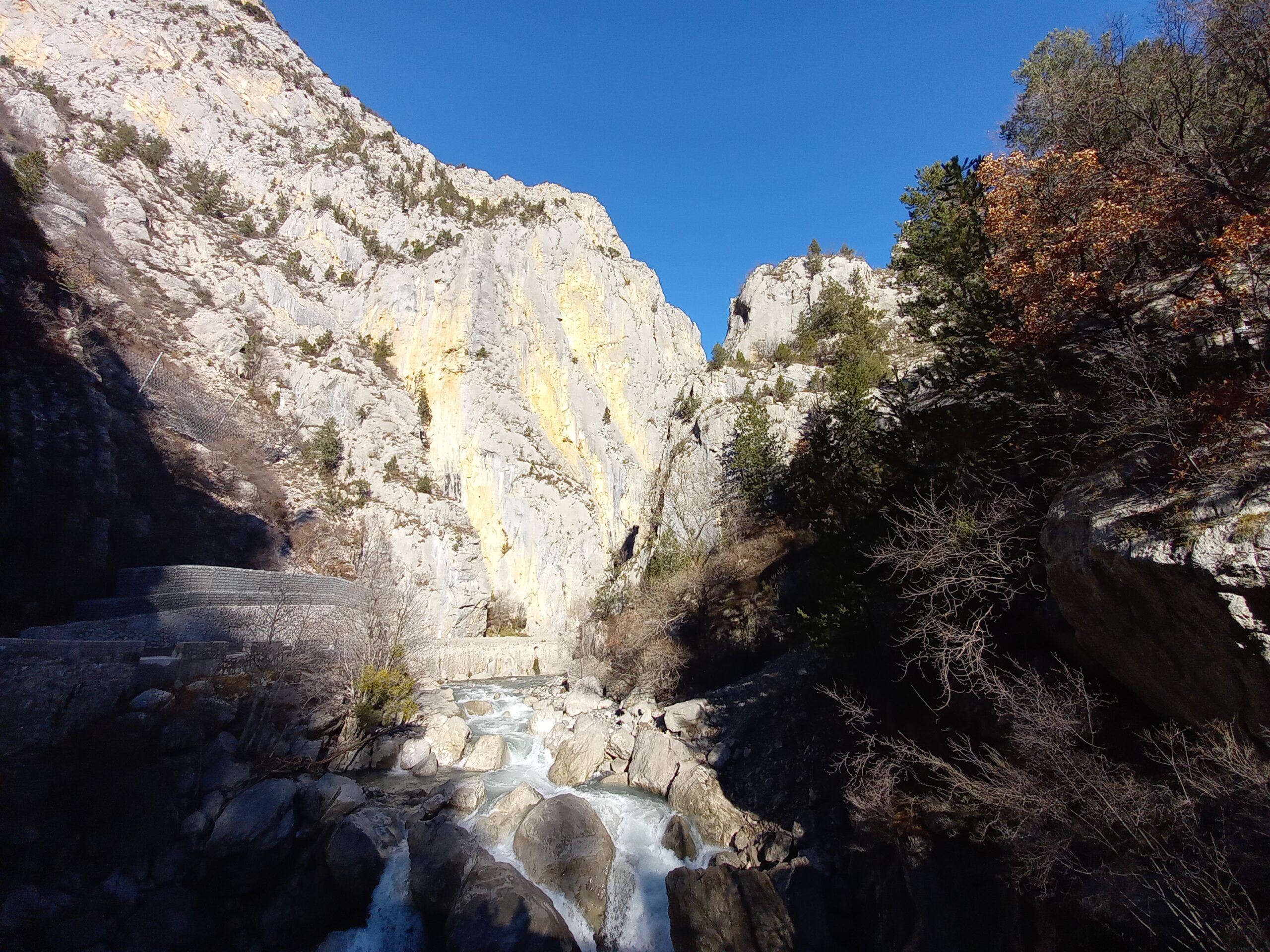
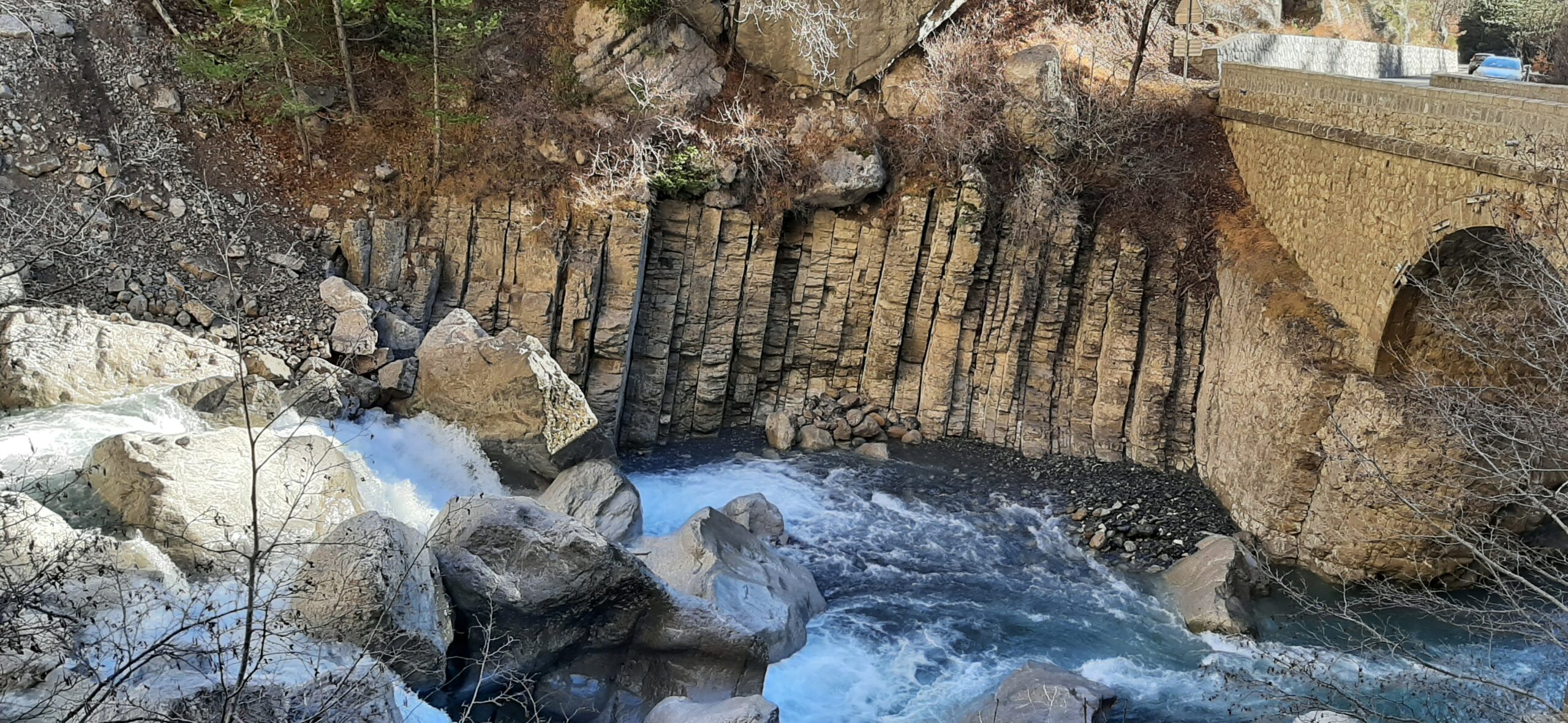
Digne-les-Bains
At 11 km (0h15 by car)
Digne-les-Bains is a quiet little prefecture, isolated from major communication routes, where no major events have marked its history except for a plague epidemic and the passage of Napoleon after his escape from exile on the island of Elba, on his way to overthrow King Louis XVIII. Nestled at the confluence of three valleys, in a mountainous setting at an altitude of 600m, Digne-les-Bains has preserved few vestiges of its former fortified districts. Built on a hill around a castle that has also disappeared, there remains the Saint-Jérôme Cathedral, inspired by neo-Gothic style, and picturesque alleys with their covered passages, some of which still retain their charm with their high pastel-colored houses. Nowadays, “life” can be found on the main boulevard Gassendi, at the end of which stands the elegant Notre-Dame-du-Bourg Cathedral in Romanesque style. To satisfy your curiosity, Digne offers several museums: the Gassendi Museum (encyclopedic), the archaeological crypt (to discover the entrails of the ancient city), the Alexandra-David-Néel House (to better understand the personality of this avant-garde adventurer and visit the house and garden where she spent her final years at the age of 101), and the Promenade Museum (to take a walk on different very easy trails up to the House of the ramparts where many fossils are exhibited, among others).
Our favorites
- Explore the old town center on foot with the map that you can pick up at the tourist office and enjoy an ice cream in the shade of the plane trees on Boulevard Gassendi.
- Discover the majestic spectacle of the limestone tufa cascade created by the Saint-Benoît spring, which has been captured here for a long time. This petrifying spring builds surprising concretions drop by drop, where the water rushes down in a constant murmur in the garden of the Museum-Promenade.
- Feel tiny on the geological time scale while contemplating the ammonite slab (at the exit of Digne, towards the “Gîtes du château” lodgings). More than 1500 fossils of these mollusks, which disappeared 60 million years ago, have been fossilized on this vast sloping plane that was the (horizontal) bottom of the sea 200 million years ago.
Crédits : Provence Alpes Digne les Bains Tourisme – Michel Boutin Le Naturographe
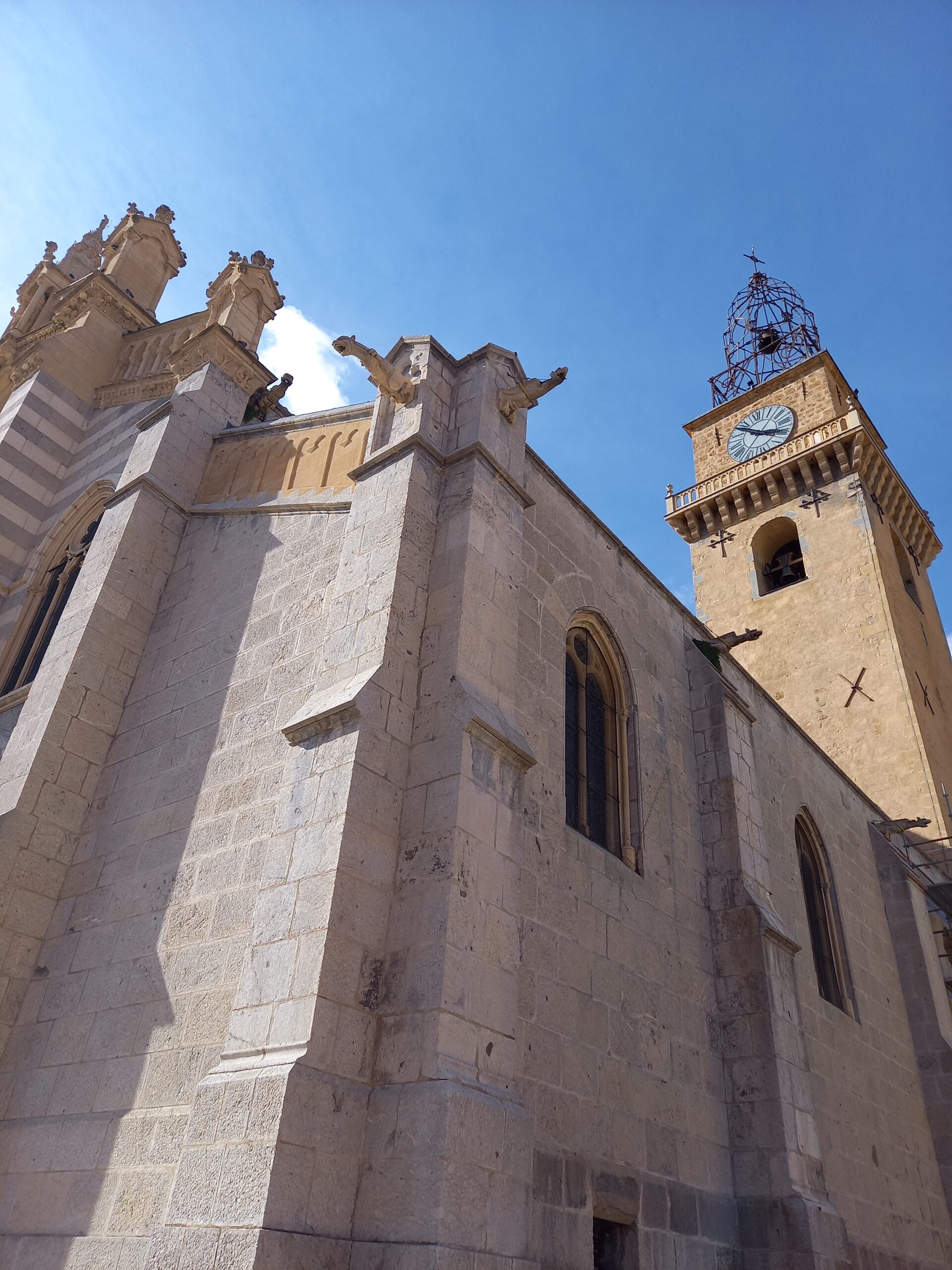

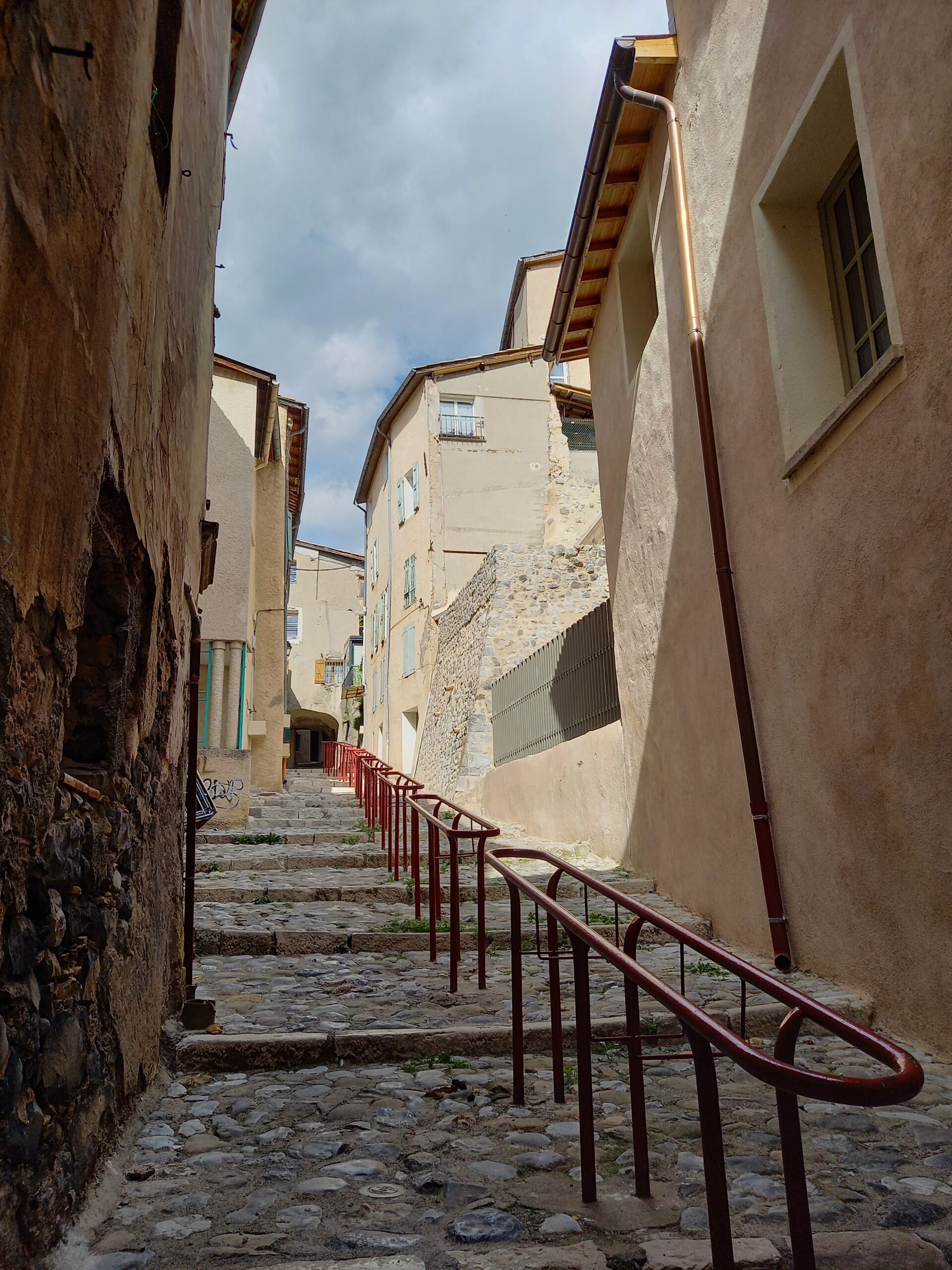
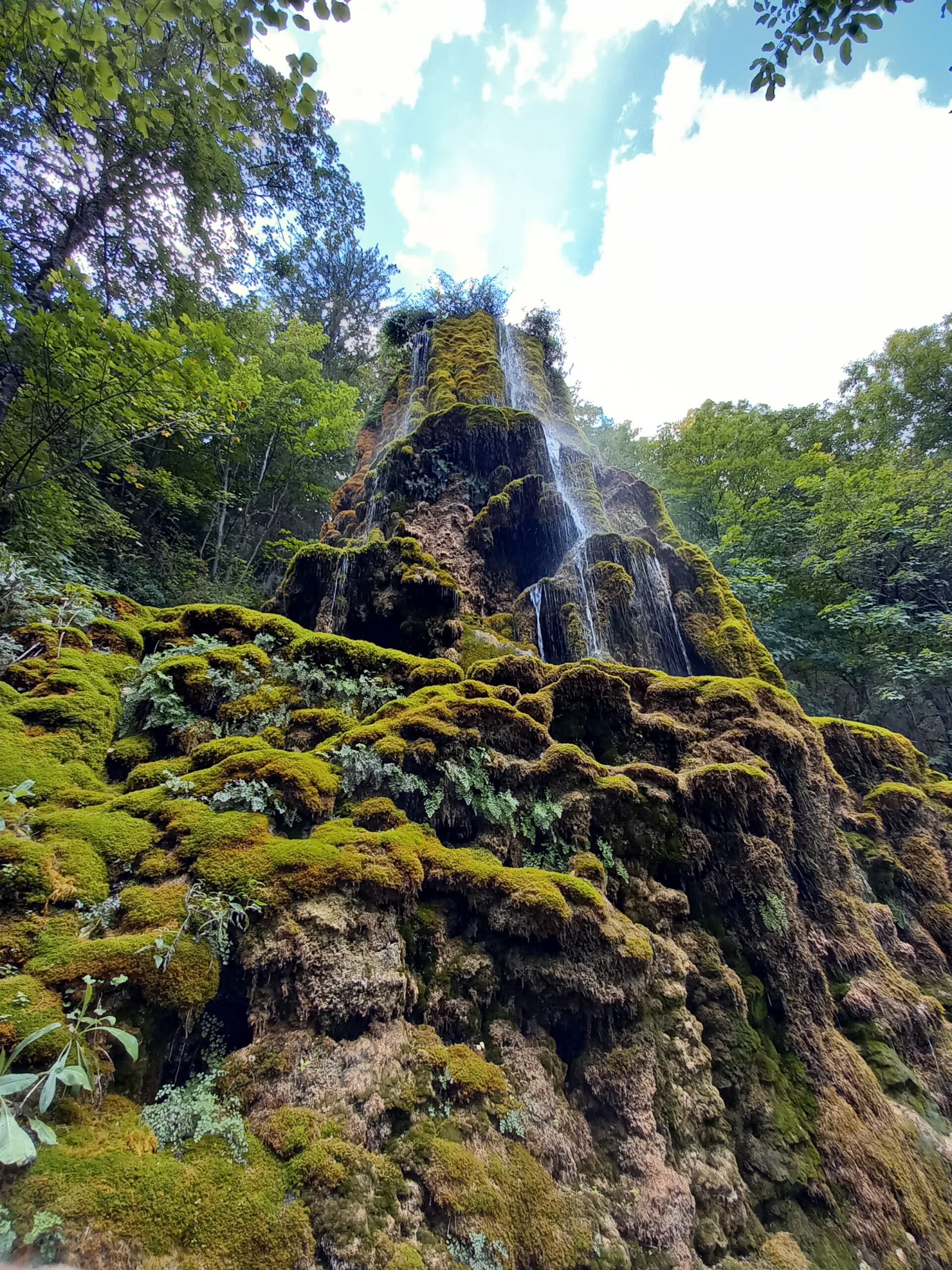

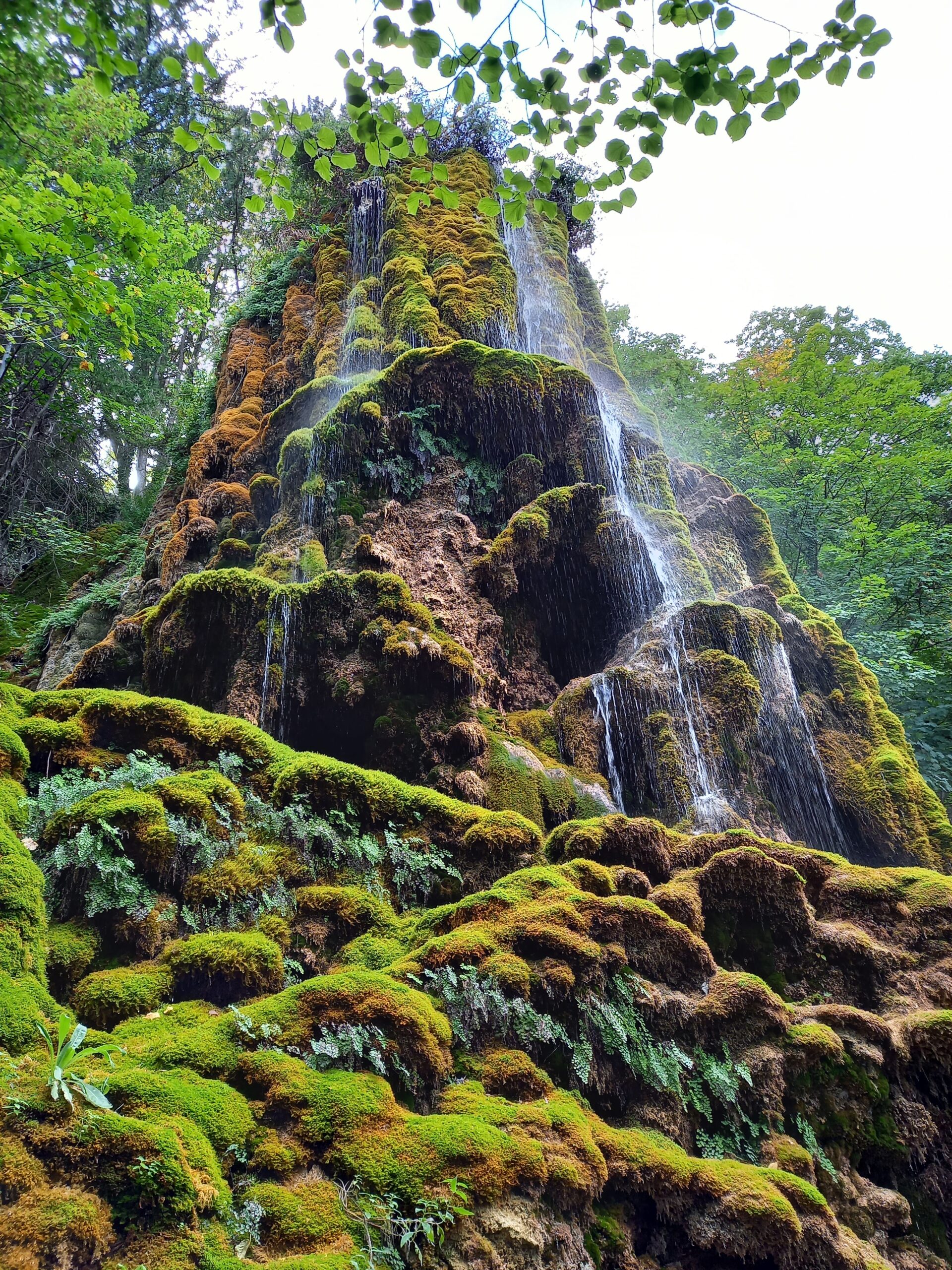
Land Art
Like a happy marriage, contemporary art and nature come together throughout the territory of the Haute Provence Geological Reserve, thanks to the initiative of the Gassendi Museum in Digne-les-Bains, which houses, among other things, a rich collection related to Land Art artists. The CAIRN (Informal Center for Research on Nature Art) also presents temporary artistic exhibitions dedicated to nature.
Discovering the works of internationally renowned Land Art artists such as Andy Goldsworthy, herman de vries, or Richard Nonas, is also an opportunity to discover extraordinary and preserved natural landscapes, and this is the uniqueness of these open-air installations.
At the Museum-Promenade, while walking along the paths, you can also contemplate works of art by artists such as Fabien Lerat (Point de réflexion – 2011), Jean Daviot (N.E.W.S – 2021), Sylvie Bussières (Fontaine de théières – 2004), Paul-Armand Gette (0m, signaling the beginning of something), and many others…
Starting from Digne-les-Bains, you can also follow the Contemporary Art road or VIAPAC connecting to Caraglio in Italy, where along the itinerary, you can discover the works of 12 artists as well as the magnificent landscapes of the southern Alps.
Our favorite
- Walk in a work art, because yes, it is possible thanks to "Refuge d'Art" by Andy Goldsworthy. It is a unique ten-day walking route in Europe, connecting 3 "Sentinels" at the heart of the 3 Digne valleys, following old paths to sometimes deserted high-altitude villages, punctuated by "place-art works" where you can take shelter or stop for the night. To be discovered over several days, at the pace of your steps... However, it is also possible to admire them all on day hikes from the “gîtes du château”.
Crédit photo : Provence Alpes Digne les Bains Tourisme – Michel Boutin Le Naturographe
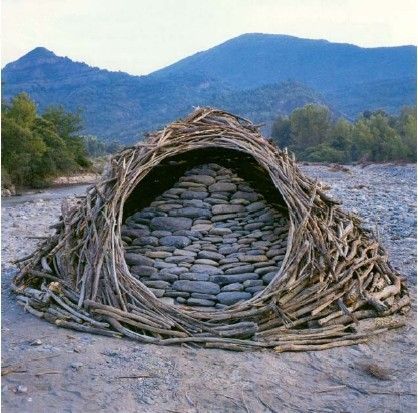
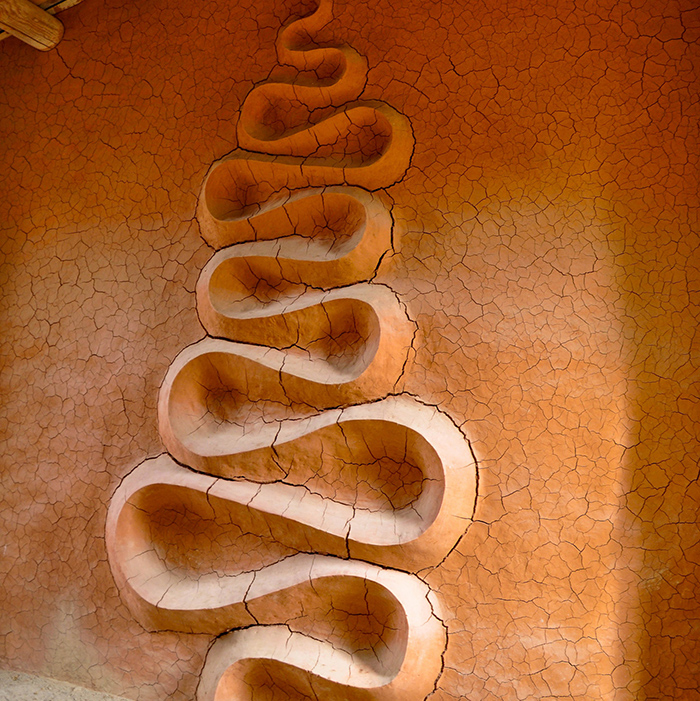
The lavender route
Valensole at 0h53 by car
The essence of Provence cannot be imagined without its vast purple fields with their heady fragrances! The lavender routes cross through the picturesque villages of the “Drôme Provençale” and “Haute-Provence”, rich in heritage inherited from the Middle Ages, where the cultivation of this blue gold is omnipresent. During the flowering period between mid-June and late July, depending on the altitude, it is an ode to Provence, a sensory journey for both the pleasure of the eyes with its shades of blue and mauve and for the inimitable and captivating scents. From Digne-les-Bains, take the road to Nice to the Valensole village, world-renowned for its endless fields. For general knowledge, it is generally the lavandin that is seen in the fields today, a cross between the officinal lavender and the aspic lavender, but this will be better explained in the various museums or exhibitions that you will come across on this fragrant route (such as the Lavender Museum in the center of Digne-les-Bains). Not far from the “Gîtes du Château” and La Robine-sur-Galabre, you will also find lavender plantations.
Our favorites
- Discover the surrounding of the village of Valensole when the lavender is in bloom, in the morning "at dawn" to better enjoy the scents and bright colors of the land and sky between June 15th and the end of July.
- Feast your eyes on the other colors of Provence: the golden wheat fields, the white flowers of almond trees in March, and for other shades of purple, the fields of clary sage against a blue sky backdrop, of course.
Crédits : Provence Alpes Digne les Bains Tourisme – Michel Boutin Le Naturographe

The Gorges of the river verdon
Between 1h and 1h40 by car depending on destination
Do we still need to introduce this gigantic and deep geological fault forming the Verdon Canyon, stretching for 21 km from Aiguines to the Point Sublime? Competing on a French scale with its North American cousin, it possesses the most impressive gorges in Europe and is the subject of all superlatives! The gorges are spectacular, the cliffs dizzying with their heights ranging from 300 to 600 meters, the wild riverbanks lined with rocky chaos, and the impressive precipices.
The Verdon Gorges are located within the regional nature park, situated in the geological reserve of Haute-Provence, which opens up to the discovery of charming perched villages, turquoise lakes, and a myriad of breathtaking landscapes. By road, numerous viewpoints offer striking panoramas and plunging views of the Verdon’s impetuous waters. It is also a paradise for climbers and hikers. To discover the gorges on foot, it is better to be a seasoned hiker, but discovery trails have also been developed for short family walks.
Do not miss the picturesque perched villages above the lakes, such as Sainte-Croix-du-Verdon, Esparron-de-Verdon with its castle flanked by a medieval tower, Moustiers-Sainte-Marie, and many others.
For water activities, a refreshing break or simply the pleasure of the eyes, the turquoise waters of Castillon, Sainte-Croix, Esparron lakes, as well as those of the Chaudanne or Quinson dam lakes await you.
Our favorites
- Take a dip, go for a pedal boat ride or paddle on the emerald waters of the largest of the Verdon lakes, Lake Sainte-Croix, a sea in the mountains of Haute-Provence in a nature that still remains wild.
- Stroll endlessly in the alleys lined with old houses in one of the prettiest villages in the region: Moustiers-Sainte-Marie. There is a crazy charm here, the natural site is exceptional, the secular craftsmanship with faience pottery and the houses are arranged harmoniously on both sides of the torrent that flows in a cascade crossed by small character bridges. Unfortunately, there are often crowds on weekends and in summer due to its popularity.
- Climb up to the Notre-Dame-de-Beauvoir chapel perched high amidst cypress trees while passing under the star hanging in the sky between the cliffs. What a joy it is to arrive at the top and witness this incredible view!

